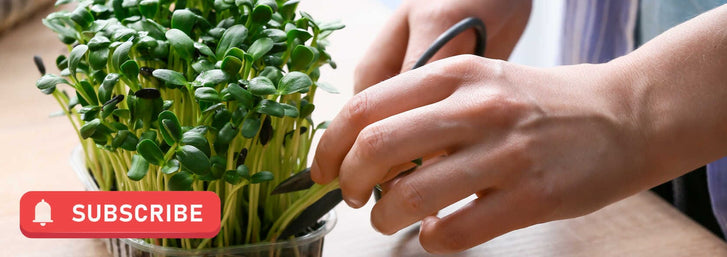
Jordan Freytag

1. Get a Gardening Journal
Tracking your garden from beginning to end is a joy and an essential component when planning next year's garden. You can learn from what worked and what didn't work the year before. Over time, after observing different varieties succeed or fail following each growing season, you get an instinct what grows best in your area of the globe.
2. Before Buying Your Seeds, make a list and do the research
This is where the gardening journal comes in. Track all of your research in it. Having all the info together will reveal aspects about your future garden that you won't initially think of--but you must! Most importantly, you'll see that seeds fall into one of two categories (for the most part): warm season and cool season crops. Basically, what this tells you is that a seed is suited to a particular climate, either warm or cold. This can help you plan for various harvesting and planting dates that comes with planting a garden diverse in cool and warm season veggies.
3. Start Indoors or Direct Sow?
As you do your research, you'll find that some seeds need to be started early indoors a few weeks before the ideal planting date in order to have timely blooms or fruiting. This requires a seedling transplant when the time comes. Direct sow is the old school method of planting your seeds outdoors after the last frost when spring is in full force, which is a tried-and-true method. It just has a different maturation schedule over the growing season compared to indoor-started crops.
4. Sow What You Eat, but Don't Sow More than You can Reap
Ambition is good, but don't bite off more than you can chew with planning your garden. Keep in mind that as your plants grow, they require many times the water and care than they need to begin with. Troubleshooting will be a necessary and manageable step in the coming months, but if you have too many plants, you may become overwhelmed with tasks.
5. Perform Ground Prep if Necessary
Determine whether your ground that you plan to grow in needs some preparatory work done to it. Tilling is a controversial topic with some swearing by it and others claiming it causes damage. Adding manure is another option. Or, you can add "green manure", commonly called cover crops. Read more in-depth articles about soil treatment and cover crops.
6. Where is the Sun, and Where will it Be?
As you make plans for your garden plot, keep in mind that where the sun sits in the sky now is not where it will be in a few months when you need it the most. So, chart what direction the sun will travel in that time and where it will be in the sky when you need it most. This may change where you place your plot and how you orient it in your yard according to sun placement.
7. Recycle Last Year's Seeds
There is no need to buy the same variety twice! If you still have some seeds left over from years past, they are still good for planting and growing on. Seeds are often packaged for a certain year to better track lot numbers--in no way is it an indication that the seed will "go bad". Still it is good to try at least 2 new varieties each growing season.
8. Review Last Year's Gardening Experience
Last year can tell us loads about what to expect for the coming growing season. Whether you have grown year after year, or if this is your first year gardening, the info the previous year provides about weather patterns and temperature fluctuations is invaluable. If this is your first time gardening and you don't have a garden journal from the previous year, check out the farmer's almanac from last year--or, better yet, talk to your neighbors who may garden, or drop in at your local nursery.
Leave a comment
Your email address will not be published. Required fields are marked *
0 Comments
No Comments yet! Be the first to start a conversation
Further Reading

10 California Natives for Organic Pest Control
Written By Lara Wadsworth Whether you call California home or not, we can all agree it is a beautiful state. From the alluring coastline to the towering redwoods, the natural meadows, and rugged mountains, California is a place all its own. How can you...

Ashleigh Smith
2024-05-066 min read0
Growing Love This Mother's Day: Activities and Gift Ideas
Mother’s Day is celebrated with a variety of heartfelt traditions, from giving flowers and cards to giving service and more. In its roots, Mother’s Day goes back to ancient spring festivals relating to maternal goddesses. Mothers and motherly bonds may...

Ashleigh Smith
2024-04-304 min read0
Grow Your Garden Anywhere: Finding Container-Friendly Plants
Looking for varieties that are container-growable? It is easier than ever to find garden seeds that can be grown in tight spaces like patios and balconies! True Leaf Market has added an identifying icon that appears as a dark green circle with a white ...

Ashleigh Smith
2024-04-302 min read0
Subscribe & Save On Sprouting Seeds, Microgreens, And Supplies!
True Leaf Market is now offering a Subscribe & Save option for popular sprouting seeds and grains, microgreens seeds and supplies, and your petgrass needs. Whether you make sprouting and microgreens a staple in your kitchen or have a microgreens busine...

Ashleigh Smith
2024-04-304 min read1



